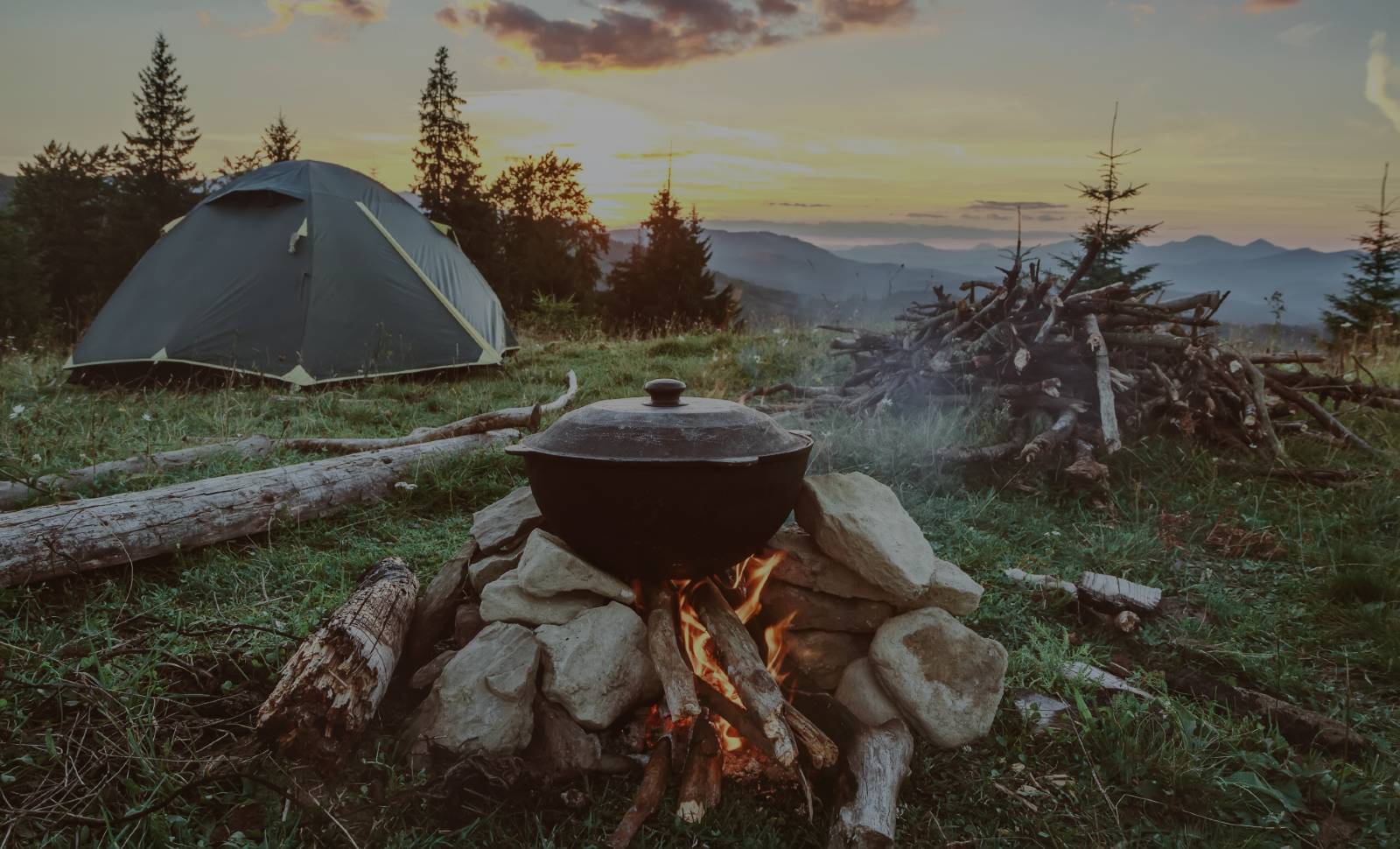Exploring the great outdoors is one of the best things to include on your bucket list. It’s not just fun, but it can also be a thrilling and one-of-a-kind experience to appreciate life. And if this is your first time, you probably feel excited. This could be a great and pleasurable experience to be out of your comfort zone and explore the wilderness. And with this, you may discover some fascinating and awe-inspiring wonders of nature and unexplored trails.
While all these are true, it’s essential to note that as exciting as this journey may be, there could be unexpected things that may occur while you’re out in the wilderness. That said, it’s critical to learn the basics that can help you survive in the wild, especially if you’re planning to spend time on extreme and adventurous outdoor activities. And more so, you may visit Prepper Base or other prepping blogs for more guides and preparation tips for a safe and enjoyable outdoor experience.
Furthermore, this article outlines a comprehensive survival guide created for people who found outdoor activities a place in their hearts. This guide may help you prepare for possible emergencies and make your outdoor adventure more fun and exciting.
Preparing Equipment For Your First Outdoor Activity
Preparation is a crucial part of every outdoor activity. And as such, you may want to make sure that all essential gadgets and tools are in your bag before stepping your foot out of the house. Prepping your equipment could be a life-and-death situation as one thing missing could ruin everything planned.
To help you get started, here is a guide for prepping every tool essential for your survival:
What Is A Bug Out Bag?
The primary purpose of a bug-out bag is to help you evacuate immediately in times of unexpected disasters. Ideally, it should allow you to move easily and get you to a safer location.
It’s also essential to understand that while this portable kit can be helpful, it may not last long, and it may only keep you safe until you’re in a shelter. A bug-out bag is generally designed to help you survive within 72 hours, as it’s believed that a person can’t sustain longer than the stated period without any water source.
And since nobody knows when such events may happen, this bag must always be ready to be taken out in times of emergency.
What Is An INCH Bag?
INCH bag stands for ‘I’m Never Coming Home’ and may contain all the necessary tools and equipment for long-term survival while still finding a new home. An INCH bag is created to increase your survival rate, especially in times of disaster and o ther matters of urgency, while in the great outdoors.
ther matters of urgency, while in the great outdoors.
In addition, listed below are some of the essential tools an INCH bag must have:
- Water filtration gear and extra filters for long-term survival
- Stainless steel water bottles for sustainable outdoor activities
- Bow and arrow that can be dis- and reassembled to hunt down animals
- Fishing rods, nets, and accessories
- Traps for hunting animals
- All-purpose stainless-steel pot for cooking that has enough depth
- Lightweight and easy-to-clean utensils
Aside from the items mentioned above, here are other essentials you don’t want to forget on your next outdoor adventures:
- Fire-Making Tools
Fire is essential when traveling deep through the wilderness. Without it, you won’t be able to cook meals and keep yourself warm during cold nights. However, it could be difficult to ignite a fire through the caveman’s way.
With that, you might want to consider bringing the following items on your extreme outdoor trip:
- Lighter: This is a handy tool that can save you in many situations. If possible, it’s advisable to have a high-quality electronic lighter that you can recharge at any time.
- Ferro Rod: This is a smart fire-making tool that works by scrubbing the two rods to spark and ignite a fire. It’s made to last longer than a box of matches and non-rechargeable lighters. Additionally, it won’t eat up much space in your bag because of its lightness and small size.
- Tinder Grate: This is one of the most underutilized sources of flame. Tinder grates are believed to be more energy-efficient and effortless compared to other methods and that’s why many people rely on its life-saving capabilities.
- Tools And Equipment For Shelter
Since you’ll be spending several nights in the wilderness, you need a reliable shelter to help you rest after a day of exploration and survival. That said, here are some tools you might want to consider bringing on an outdoor trip:
- Sleeping Bag: This is among the essential tools you should never forget and ignore. A sleeping bag is portable bedding that you can take with you wherever you go.
- Tarp: This tool can offer insulation and covering while traveling. It is used with a durable paracord and can be set up like a tent if you find camping tents hard to assemble.
- Tent: This is one of the things that should be in your bag as it provides quick access to shelter. A 3-season tent would be perfect for hot climates. But if you’re going out during colder and snowy seasons, you should go for a 4-season tent.
- Shovel: This is a helpful tool you can use when building a shelter. You can use it to dig holes for the foundation for your tents or to remove piles of snow around the area. When choosing a shovel, go for one that is collapsible so that it may fit your bag perfectly.
- Power And Lighting Equipment
When the sun sets, you’ll need equipment that will light up your surroundings and help you see the area. As such, here are some lighting and power tools that may help you:
- Portable Lamps, Lights, And Lanterns: You can choose between battery-operated, solar-powered, or hand-cranked, depending on your needs. A solar-powered one may be better since it relies on sunlight and doesn’t need a battery to operate. But if you’re going out during cold seasons, a hand-held, battery-operated flashlight would be a good option.
- Batteries And Chargers: This is essential for charging not only your lights but also other tools, such as electronic lighters and portable radios.
- Additional Items You Need
Other than the list above, here are additional helpful tools and gears that you might want to consider bringing to your outdoor activities. However, be mindful of the weight of your belongings.
- Clothing, such as socks, convertible pants, hiking boots, quick-dry tops, brim hats, rain gear, rainwear, gloves, and jacket

- Swiss knife or multitool
- Survival knives, such as boot knives, buck knives, combat knives, tactical knives, tanto knives, bowie knives, and throwing knives
- Tools for repairs, such as sewing needles and threads, patches, and sharpeners
- Solar-powered or hand-cranked radios to stay on top of the news, especially weather forecasts
- Machete for building shelters and protecting yourself against wild animals if necessary
- Compass
- Sturdy saw
- Topographic maps with guides and other necessary details
- Duct tape
- Energy bars to boost your energy and increase your chances of surviving
Some of these tools may not be as essential as those mentioned above. You may not bring them if you’re concerned about the weight of your bag, especially when traversing dangerous paths.
Now that you know the necessary gear, tools, and equipment that may help you survive, it’s time to learn and familiarize yourself with the different how-tos essential to survive in the wilderness. Learning The Essential How-Tos To Survive The Wilderness
- How To Prep Your First Aid Kit For Outdoor Activities?
Traveling the great outdoors could be full of dangers. For instance, you can be hurt or injured if you’re not careful enough with your surroundings. Consequently, it’s essential to have a first aid kit that will help you treat minor injuries and other medical conditions. 
You can purchase a set of first aid in your local pharmacy. However, you can also customize your kit and handpick medical supplies that you think would serve you best during outdoor emergencies.
That said, here are some typical items you may want to include in your first aid kit:
- Adhesive bandages and gauze pads
- Antiseptic solution and alcohol
- Antibacterial soap
- Antibiotic and antifungal creams and ointments
- Burn gels
- Chest seals
- Cotton pads and balls
- Eyewash and eye cleaning solutions
- Hydrocortisone cream for insect bites
- Medical tape
- Thermometer
- Petroleum jelly
- Tourniquets and triangular bandages
- Forceps
- How To Start A Fire?
As mentioned earlier, fire is one of the most important elements that can help you survive staying outdoors, whether to keep you warm during freezing weather or enable you to cook your food. That said, it’s only crucial to know how to start one. Aside from relying on fire-making tools, it can also be to your advantage to be familiarized with other methods.
So, here are some fire-making methods you might want to know:
- Using Rocks: Use a piece of quartz with pointy edges and strike its sharp edges with a carbon-steel knife to create a spark. You want the sparks to fall onto your kindling to start a fire.

- Using Lighters and Matches: This might be the easiest way to produce a fire. All you need to do is ignite a small twig and spread it to others. It may take time for the fire to spread out, so make sure to protect the site from winds and dried leaves.
- Using Ferro Rods: Start pulling the rod back and forth until you produce a spark that will ignite your kindling. The stronger you strike, the more sparks you will generate.
- Using A Glass: This method is perfect for areas with direct sunlight. Allow the light to pass through the glass until it becomes too hot and a fire starts. You may want to do this in a location where the sunlight is completely radiant and strong.
- How To Prevent Dehydration?
Dehydration is one of the problems linked to outdoor activities, especially in areas with fewer water sources. It can be fatal if it’s left ignored. So, to help you prevent this from happening, consider the following tips below could be a good start:
- Drink plenty of fluids regularly, particularly before and after physical activities
- Consume hydrating foods, such as water-rich vegetables and fruits, to increase your fluid levels
- Always ensure your supply of water and bring more than necessary
- For outdoor trips, one of the first things you need to locate is water. You may check out possible sources, such as rivers, streams, waterfalls, etc. You may also look for other stagnant water sources, such as lakes and ponds. How To Find Food And Water?
However, note that such sources are potentially inhabited by harmful bacteria that can make you sick. In that case, you may need to boil the water first to kill them and other pollutants. You can also use iodine tablets or a portable water filtration system to purify your water.
If you’re settling in a muddy location, you may dig a hole and let it fill with water. Still, you’d want to treat this first before consuming it. Additionally, you may collect rainwater and dewdrops that accumulate on the leaves of the plants and trees. 
When talking about food supply, it would be a good option to look for food around you, too, rather than relying mostly on your emergency food ration. You may consider searching for possible game trails and setting up nets, traps, and snares to hunt potential animals in the area.
Moreover, while many mushrooms are safe, note that some can poison you. So, it would be best to avoid them as much as possible together with red and white-colored berries. Also, consider studying the diet of animals around the area since there are better chances of eating the same things.
Final Words
The great outdoors is open to anyone who wants to experience its natural beauty. However, unexpected things may happen, such as natural disasters and accidents. With that, it’s necessary to keep yourself fully informed before embarking on adventurous outdoor activities.
Start by bringing all the essential tools and equipment from clothing to fire-making and shelter-building utilities. Also, know the basic how-tos that may help you survive in the wilderness. And as such, reading this comprehensive guide may help you prepare for wonderful, exciting, and thrilling outdoor adventures.




